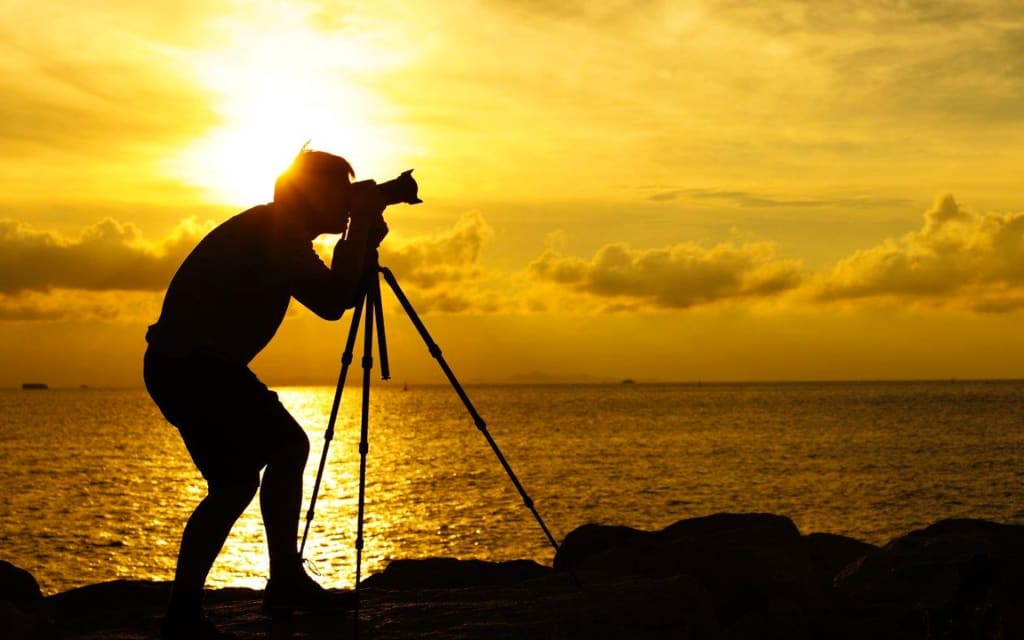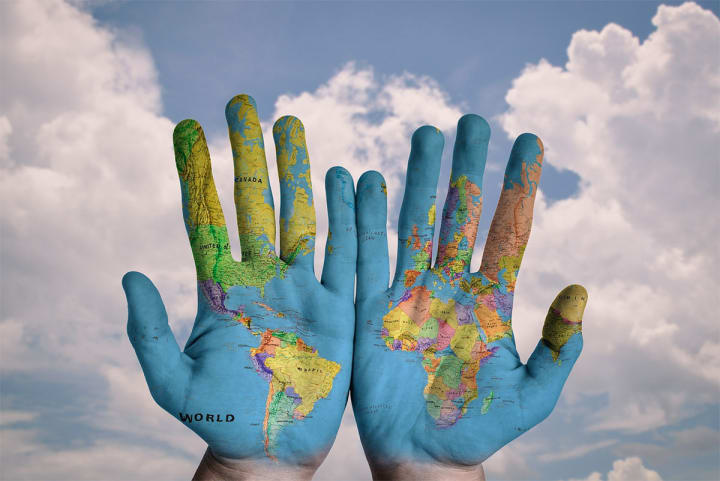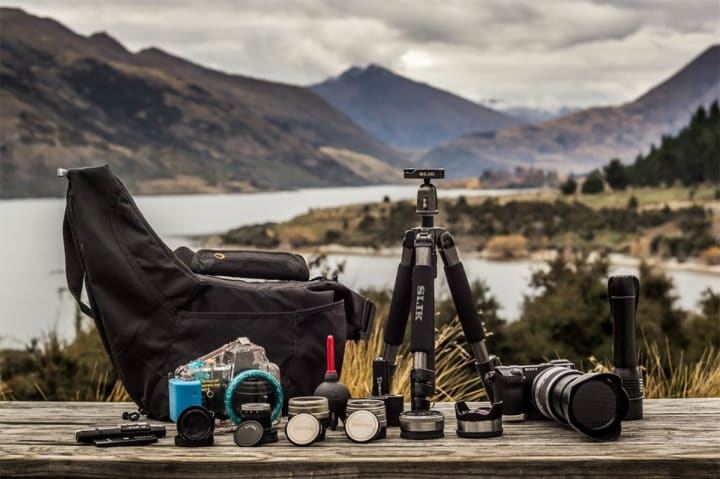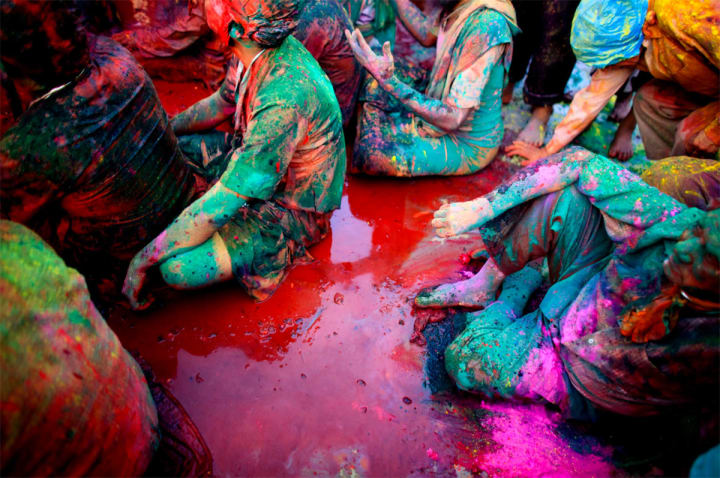Everything You Need To Know To Become A Travel Photographer
Besides a camera and passion, being a professional travel photographer also requires planning, patience, and a little bit of luck.

The most essential characteristics of a good travel photographer are similar to that of a good traveller; all you need is a camera in hand and a passion to travel the world. But you may be wondering: "How do I become a professional travel photographer?"
You’ve come to the right place. In a society fraught with competition for attention to posted photos, views and likes, industry knowledge is key if you want to travel and profit off of the beauty around you. The life of a travel photographer is certainly attractive on paper, but it's definitely not a job for everyone and for those that want it, it's a tough world to navigate.
Is Travel Photography for You?

Is your nine-to-five desk job boring you? Do you hate reporting to a boss? Is Peter in accounting really grinding your gears? It is a dream of many to leave their day jobs and get paid to travel the world, but is it really that easy? With a little bit of planning and the mindset of an entrepreneur, you too can make travel photography a viable lifestyle. However, there are a couple of things you must realize right off the bat.
Leaving the comforts of a steady paycheck isn’t always easy, and it isn’t for everyone. Job security and a bi-monthly direct deposit keep a lot of people in a job they loathe with a boss they despise.
Before you give your two weeks notice, keep in mind that the money won’t come right away. You have to be persistent; you have to be patient and resilient. These traits are key when mastering the mindset of an entrepreneur, and will sustain you on your path to becoming a successful travel photographer.
Think Big, Start Small

It is important to hone your skills at home before you step out into this new world of travel photography. Arm yourself with practical knowledge of photography and you will already be leaps and bounds ahead of the competition. Learn how your camera works, not just the buttons and modes, but how each button or each function changes the image. How does adjusting ISO affect the final image? When should you use 1/50 vs. 1/100 shutter speed? What is the exposure triangle and how can you best use that to create the most stunning image possible?
Before you hop on a plane to India (or wherever you decide to go first), spend some time around your hometown mastering every nuance of photography so that you don't waste time on your trip working out the kinks. Develop a style, find a niche. Do you enjoy photographing people or do you prefer landscape photography? Are you interested in depicting interesting architecture, or are you more keen on capturing beautiful, abstract imagery? Whatever your niche is, to hone in on those skills and identify your priorities before you leave to explore the world will allow you to be much more successful in the long run. Like any professional, to be a successful travel photographer you need to exhibit some degree of focus in your work. If you don't, you'll have a hard time differentiating yourself from all the other picture-takers.
The last thing you want to do is arrive in a foreign country without a plan. If you want to learn how to be a successful travel photographer, you must learn everything you can about the location, laws, customs, culture, language, etc. This will help you avoid the common tourist pitfalls and will allow you to get a leg up in the world of travel photography.
One of the most common pitfalls in terms of achieving photographic success is to capture only the most well-known parts of a city or country. (i.e. The Taj Mahal in India, The Leaning Tower of Pisa in Italy, The Great Wall of China, etc.) Of course you may want to visit these locations, as they are certainly magnificent landmarks for a reason. However, if your objective is to show your audience a world they do not know intimately, try and think outside the box when deciding on the best subject material. If you do go back to the old favorites, do your best to capture these locations in a unique and original way; add your own style to every photo you shoot.
Another great tip to excel as a travel photographer is to hire a guide to show you around. Local guides, people who grew up and live in the country you are visiting, will have a vast expanse of knowledge that your typical travel books cannot possibly convey to its fullest. Always seek to find the authentic and intriguing details of the locale. Whether it is visiting a local marketplace or a traveling through part of a town rarely visited by tourists, cultivating a relationship with the local people will allow you to capture an authentic slice of life. Again, this is where taking time to study the culture and, if possible, the language before departure will be a great asset once your plane touches down on the other side of the world.
Finally, regarding research, it is important to build a knowledge base of the local laws and customs surrounding public photography. In countries like Brazil, Spain, or Switzerland, very strict laws exist about photographing people in public. Some countries require a permit to photograph certain landmarks. But in general, even when it is legal to photograph people in public, it is best to approach the situation cautiously – and respectfully – and always use common sense and your best judgement.
Time to Pack

Now that you’ve decided to become a travel photographer, you’ve mastered the art of photography, and you've done your research: it’s time to pack your bags. At this point you’ll be asking yourself, “What should I bring?” or, “How much gear is too much?” While the answers may vary from person to person, here are some ideas to consider.
What mode or manner of travel will you be using during your trip? Will you be backpacking through the mountains of Nepal or taking the EuroRail across Western Europe? For those who will be carrying all of the photography gear and belongings with them all day, every day, it is best to pack light. In this situation, one DSLR body, a mid-range and a telephoto lens, a couple of filters for your lenses, memory cards, charger and a backup battery (or two) should suffice.
If gear weight is not your main concern (perhaps for a photographer traveling mostly by plane or train), you will have more leeway. For photographers who have multiple DSLR bodies, and a bevy of beautiful lenses, you may find that you’ll want to bring one or two prime (fixed focal length) lenses, in addition to the standard wide, mid-range, and telephoto lenses. While I personally prefer to shoot with natural light as often as possible, there comes a time when a flash or similar lighting unit can come in handy. Again, that is for you to decide depending on your particular style of shooting.
Using a tripod can sometimes make all the difference in the final product, but keep in mind that they can be fairly heavy and often take up a lot of space. Prioritize your goals for the trip and decide accordingly. You'll be much happier with your 'basics' in tow (charger, multiple batteries, memory cards, cables, and your laptop for editing on-the-go) than supplementary tools.
This is why starting small in your work gives you an advantage in the long run. By starting small, you can learn the ropes while the stakes are still low, and you'll know immediately based on your project needs what gear is essential to your particular niche of photography.
Homecoming

Photo by Palani Mohan
The above image might not mean much to you, which articulates well this next, and very crucial, facet of travel photography: telling the story. The website of renowned travel photographer Palani Mohan exemplifies the importance of separating photos into series; i.e. stories. Each individual photo becomes a part of a larger whole, which is everything.
You have now returned home from your first trip and have hundreds of photos on multiple memory cards. Before you start posting them all over social media, take some time to look through every image and find a common theme. Try to tell a story with your photos; retell the adventure in such a way as to inspire passion for your work. A concise collection of connected, creative images will allow you to create a powerful narrative for your viewers.
The coolest thing about travel photography is that as long as global society keeps evolving (a pretty sure bet) there will always be a fresh perspective on places you've been, or new places to explore that are only starting to garner interest worldwide.
Now that you know how to be a travel photographer, do you think you have what it takes?
About the Creator
Eddie Matias
Video connoisseur. Visual DJ. Mashup maniac. Never been to a library but has seen a lot of movies.






Comments
There are no comments for this story
Be the first to respond and start the conversation.